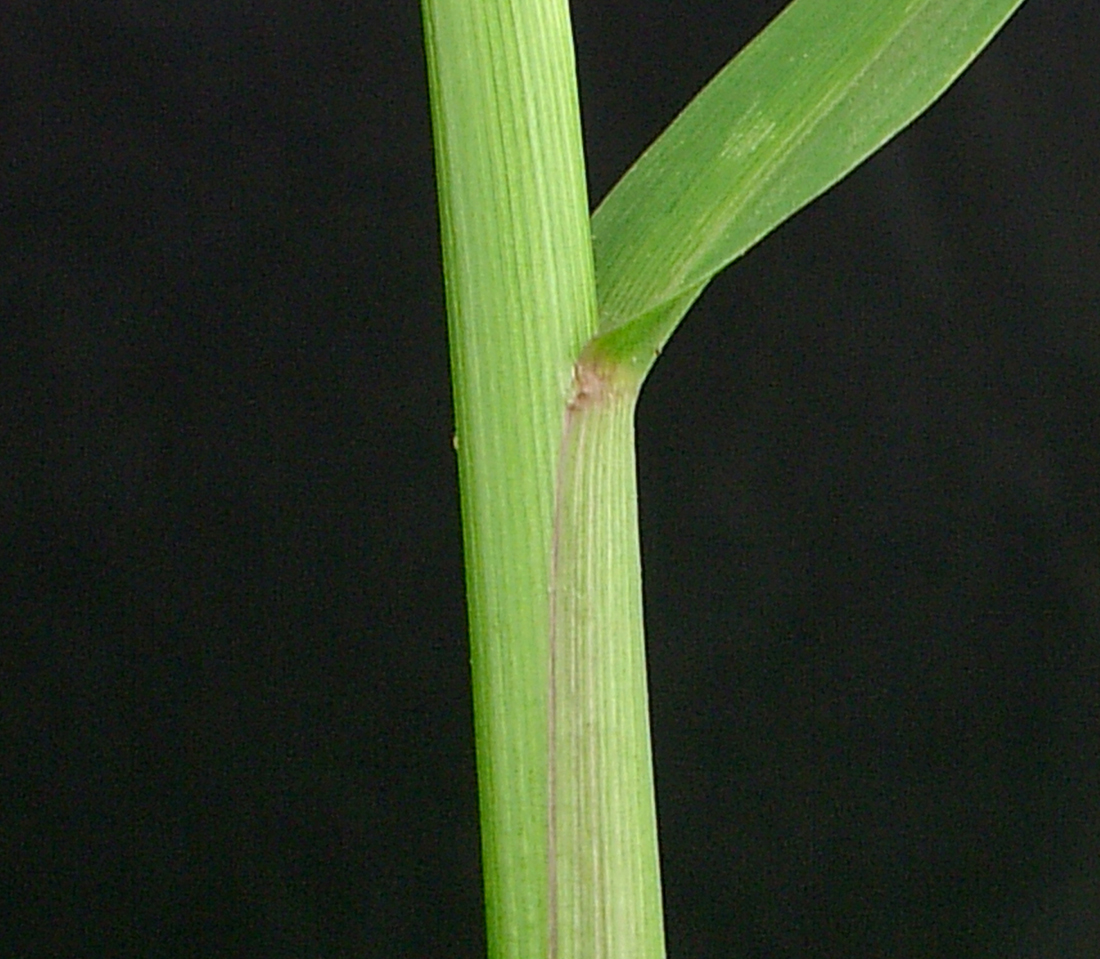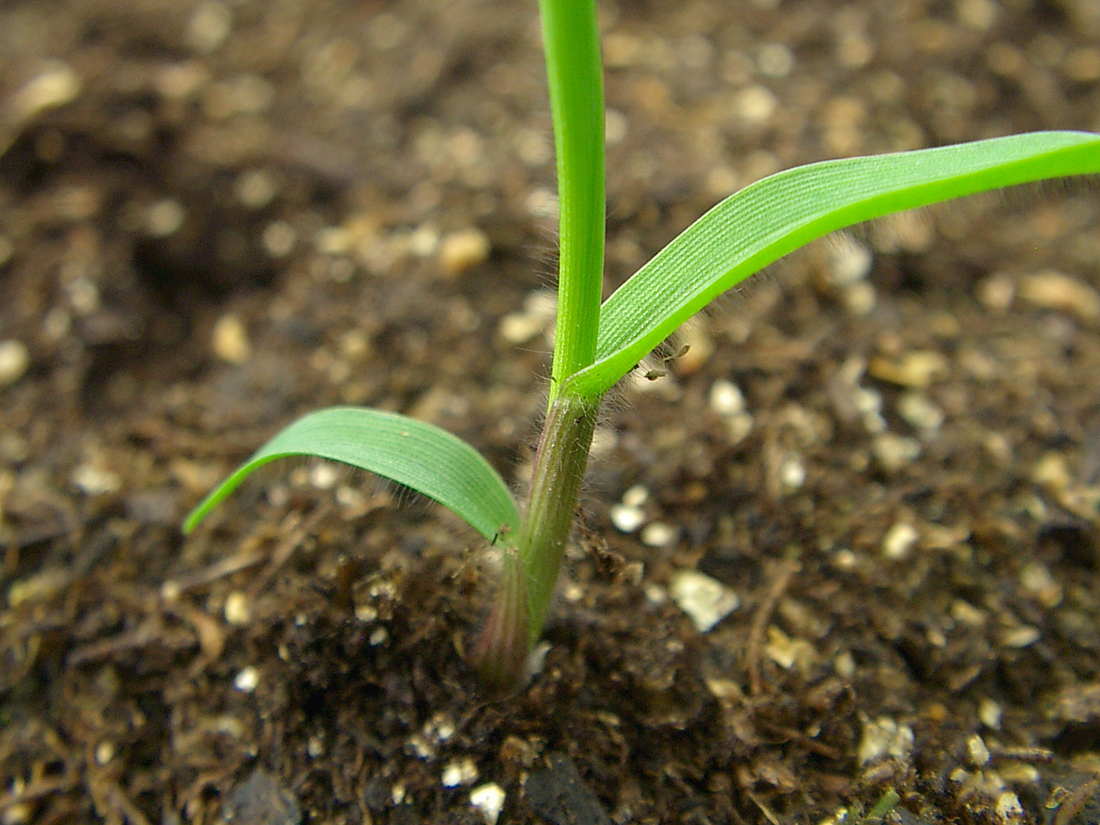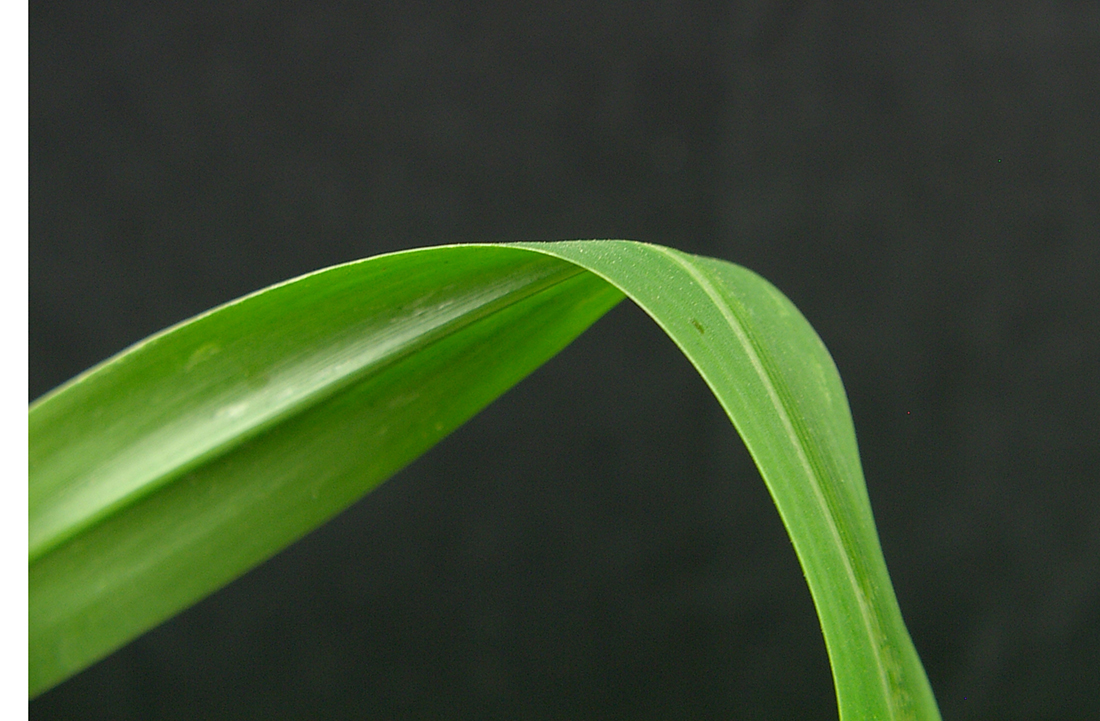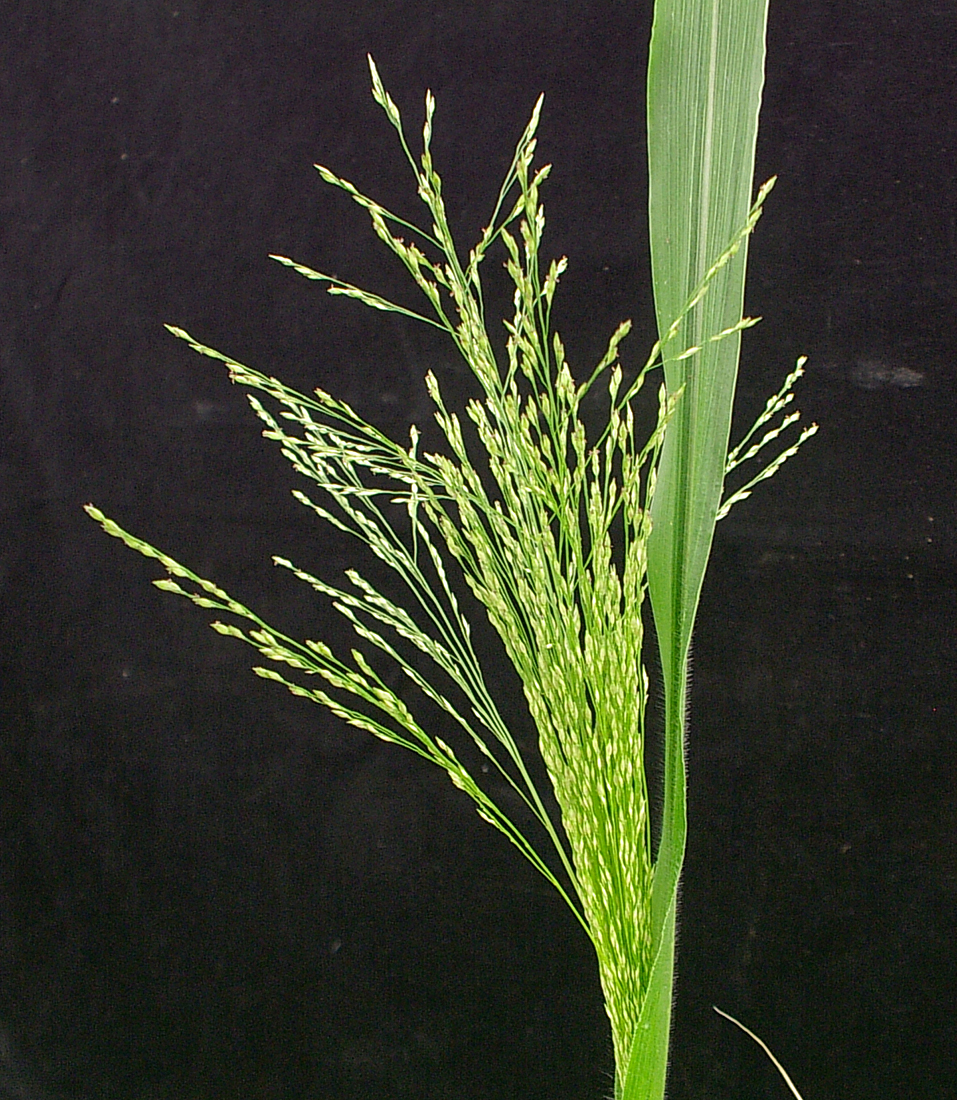Fall Panicum
- Grass (Poaceae family):
- Panicum dichotomiflorum Michx.
- EPPO code:
- PANDI
- Other names:
- Smooth panicum, smooth witch grass, spreading panic grass
Species information
- Lifecycle:
- Annual.
- Propagation:
- Reproduces by seed.
- Emergence:
- Fall panicum is one of the last annual grass species to emerge in the spring.
- Habitat:
- It is most commonly found in southwestern Ontario.
- Competitiveness:
- Agriculture and Agri-Food Canada research has shown that fall panicum densities of 20,000 plants/ac can result in a 10% yield loss in corn and soybeans.
Identification clues
- Auricles:
- None.
- Ligule:
- Hairy.
- Leaf blade:
- Very young seedlings can be densely hairy, but will become less hairy with age. Older seedling plants feel smooth and hairless, but do contain a very prominent midrib.
- Leaf sheath:
- The margins of the sheath are hairless.
- Stem:
- Round.
- Seed heads:
- Seed heads appear as several branches of panicles that contain seed that is yellow to brown in colour.
- Roots:
- Fibrous.
Often mistaken for
I know it's not Green foxtail because fall panicum does not have hairy leaf sheath margins.
I know it's not Giant foxtail because the upper leaf blade of fall panicum is hairless and it does not have hairy leaf sheath margins.
I know it's not Proso millet because fall panicum does not have hairy stems or hairs along the base of the leaf blade’s margin
I know it's not Witchgrass because fall panicum isn’t as hairy as witchgrass, which is extremely hairy. Also, the leaf blade of witchgrass lacks the prominent midrib that fall panicum has.





Updated: January 13, 2023
Published: January 13, 2023